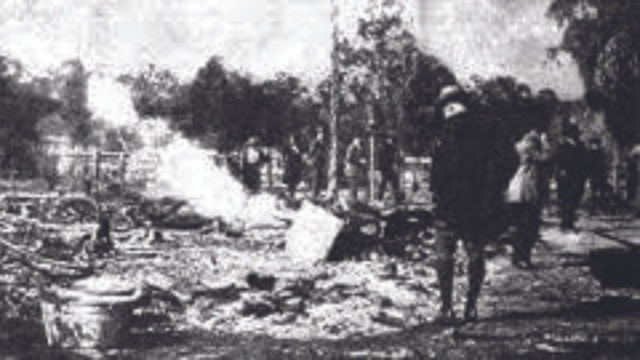
The Rosewood massacre was a racially motivated massacre of Black people and the destruction of a black town that took place during the first week of January 1923 in rural Levy County, Florida, United States. At least six Black people and two white people were killed, but eyewitness accounts suggested a higher death toll of 27 to 150. The town of Rosewood was destroyed in what contemporary news reports characterized as a race riot. Florida had an especially high number of lynchings of Black men in the years before the massacre,[2] including a well-publicized incident in December 1922.[citation needed]
Before the massacre, the town of Rosewood had been a quiet, primarily Black, self-sufficient whistle stop on the Seaboard Air Line Railway. Trouble began when white men from several nearby towns lynched a Black Rosewood resident because of accusations that a white woman in nearby Sumner had been assaulted by a Black drifter. A mob of several hundred whites combed the countryside hunting for black people and burned almost every structure in Rosewood. For several days, survivors from the town hid in nearby swamps until they were evacuated to larger towns by train and car. No arrests were made for what happened in Rosewood. The town was abandoned by its former black and white residents; none of them ever moved back, none of them were ever compensated for the loss of their land, and the town ceased to exist.
Although the rioting was widely reported around the United States at the time, few official records documented the event. The survivors, their descendants, and the perpetrators all remained silent about Rosewood for decades. Sixty years after the rioting, the story of Rosewood was revived by major media outlets when several journalists covered it in the early 1980s. The survivors and their descendants all organized in an attempt to sue the state for failing to protect Rosewood’s black community. In 1993, the Florida Legislature commissioned a report on the incident. As a result of the findings, Florida compensated the survivors and their descendants for the damages which they had incurred because of racial violence. The incident was the subject of a 1997 feature film which was directed by John Singleton. In 2004, the state designated the site of Rosewood as a Florida Heritage Landmark.









